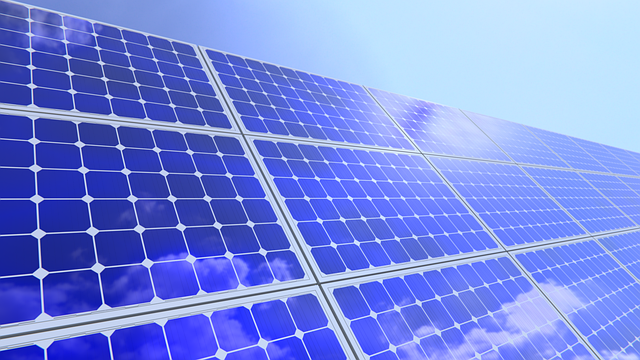Mono Perc Solar Cells: Efficiency Unveiled
Table of Contents
Mono Perc: Unlocking the Potential of Solar Energy
With the increasing global focus on renewable energy, solar power has emerged as a promising alternative to traditional energy sources. Advancements in solar technology have made it more efficient and affordable than ever before. Among the various innovations in solar panels, mono-perc (passivated emitter rear cell) has gained significant attention for its potential to revolutionize the industry. In this blog, we will explore the benefits and implications of mono-perc technology, its working principle, and its contribution to a sustainable future.
The Rise of Mono Perc: An Introduction
The demand for solar energy has experienced a remarkable surge over the past decade. Governments, businesses, and individuals alike are recognizing the potential of solar power in reducing carbon emissions and creating a sustainable future. This has led to significant investments in research and development to enhance the efficiency and affordability of solar panels.
Mono Perc is a breakthrough in solar panel technology that has played a key role in driving the growth of solar energy. Perc, or Passivated Emitter Rear Cell, is a design approach that maximizes the efficiency of solar cells by reducing energy losses. Mono Perc takes this concept further by using monocrystalline silicon cells, which are more conducive to energy conversion, resulting in higher efficiency and power output.
How Does Mono Perc Work?
Mono Perc technology harnesses the inherent properties of monocrystalline silicon cells to generate electricity from sunlight. These cells are made of a single silicon crystal structure, which enables more efficient electron movement within the cell. By adding a passivation layer to the rear surface of the cell, Perc technology reduces energy losses caused by recombination of electrons and holes.
The passivation layer, typically made of silicon nitride, acts as a protective coating, preventing unwanted electron movement and increasing the overall efficiency of the solar cell. Combined with the rear contacts, which enable better electrical conductivity, mono Perc technology ensures that a higher proportion of sunlight is efficiently converted into usable electricity.
The Advantages of Mono Perc
The adoption of mono Perc technology offers several advantages over conventional solar panels, making it a preferred choice for many solar energy proponents.
Higher Efficiency
Mono Perc technology achieves higher conversion efficiency compared to traditional solar panels. The combination of monocrystalline silicon cells and the passivation layer reduces energy losses, resulting in a higher power output. This means that a smaller area of solar panels can generate the same amount of electricity, maximizing energy production in limited spaces.
Improved Durability
The passivation layer in mono Perc panels also provides an additional layer of protection against external factors, such as moisture and dust. This improved durability ensures that the panels can operate effectively for longer periods without degradation or performance loss. Consequently, mono Perc panels have longer lifespans compared to traditional solar panels, making them a more cost-effective investment over time.
Greater Energy Yield
With their superior efficiency, mono Perc panels can generate more electricity from the same amount of sunlight. This means that they can produce a higher energy yield, especially in regions with limited solar resources. As a result, mono Perc technology allows homeowners and businesses to maximize their energy self-sufficiency and reduce dependence on the grid.
Economic Viability
The initial cost of mono Perc panels may be marginally higher than traditional solar panels; however, the long-term benefits outweigh the initial investment. The higher energy yield and longer lifespan translate into greater energy savings and reduced electricity bills over time. Moreover, as the demand for solar energy continues to rise, economies of scale are expected to further drive down the cost of mono Perc panels, making them even more economically viable.
Contributing to a Sustainable Future
Mono Perc technology not only offers tangible benefits to individual users but also contributes to a larger goal of achieving a sustainable future.
Reduced Carbon Footprint
The increased efficiency of mono Perc panels means that more electricity can be generated using the same amount of sunlight. This reduces the need for electricity generated from fossil fuel-based power plants, which emit harmful greenhouse gases and contribute to climate change. By harnessing solar energy with mono Perc technology, we can significantly reduce our carbon footprint and mitigate the adverse effects of global warming.
Promoting Energy Independence
The generation of solar energy using mono Perc panels empowers individuals, businesses, and communities to become more energy independent. By relying on clean and renewable energy, we can reduce our dependence on fossil fuels, minimize our exposure to fluctuating energy prices, and secure a more sustainable future for the coming generations.
Conclusion
Optimize your solar potential with SolarClue®’s guide on Mono Perc solar cells. Distinguished by a passivated emitter rear contact, these cells enhance efficiency by minimizing electron recombination. Understand the manufacturing process contributing to superior performance and durability. SolarClue® illuminates the impact of the rear contact design, facilitating better electrical conductivity. We discuss factors driving high efficiency and guide consumers in leveraging these for optimal installations. Explore Mono Perc’s advantages in limited space scenarios. SolarClue® provides insights into adaptability and performance optimization, ensuring consistent efficiency in varying sunlight conditions. Trust us for informed choices, seamless integration, and access to the latest advancements in Mono Perc technology. Contact us for an efficient solar journey.
Frequently Asked Questions
Mono Perc solar cells feature a passivated emitter rear contact, reducing recombination losses. This technology enhances efficiency by improving the cell’s ability to convert sunlight into electricity.
SolarClue® delves into the manufacturing process of Mono Perc cells, explaining how precise construction and quality materials contribute to superior performance and long-term durability.
The passivation layer in Mono Perc cells minimizes electron recombination, preventing the loss of electrons. This crucial role enhances energy conversion efficiency by maintaining a higher percentage of converted sunlight.
SolarClue® explains the impact of the rear contact design, facilitating improved electrical conductivity in Mono Perc cells. This design enhances overall cell performance, ensuring efficient electricity generation.
SolarClue® discusses factors like the passivation layer and rear contact design, contributing to high efficiency. We guide consumers in understanding and leveraging these factors for optimal solar installations.
Mono Perc cells excel in scenarios with limited space. SolarClue® assists consumers in evaluating their space constraints and energy requirements, determining whether Mono Perc technology aligns with their specific needs.
Mono Perc cells perform well in varying sunlight conditions. SolarClue® provides insights into their adaptability and recommends performance optimization strategies, ensuring consistent efficiency.
Mono Perc panels generally offer higher electricity output. SolarClue® guides consumers in setting performance expectations and making informed choices, considering factors like space availability and budget constraints.
SolarClue® stays abreast of Mono Perc technology advancements. We ensure consumers have access to the latest and most efficient products, providing a reliable source for up-to-date information.
SolarClue® offers seamless integration guidance for Mono Perc panels. From installation tips to maximizing benefits, we ensure consumers harness the full potential of this advanced technology in their solar energy systems.




